Campbell's hamster: breed features, maintenance and care

Very often, owners of city apartments and houses prefer to choose small animals as pets. One of these individuals are hamsters, represented in a wide variety of species. Campbell's hamster is a fairly popular small rodent, which is very often found in city dwellings as a funny little pet.
Description of the breed
In the genus of upholstered rodents, there are several species of animals, one of which is Campbell's hamster, named after a British consul. However, domestic scientists were still engaged in a more detailed study of a small animal, therefore its second name also exists - Russian dwarf hamster.
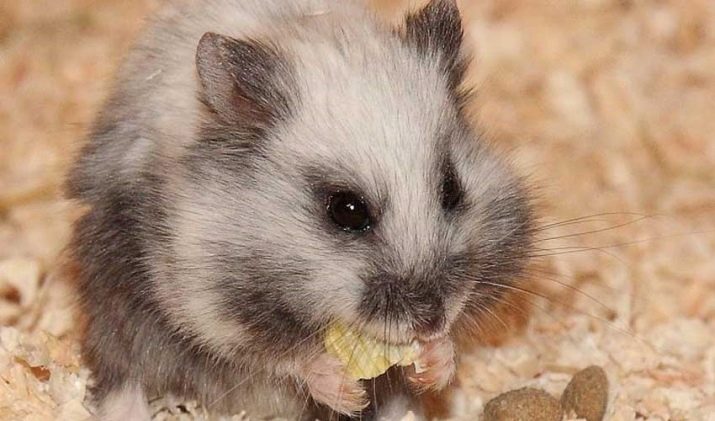
The breed in its natural environment actively inhabits most of the post-Soviet space, prefers to settle in the steppes and deserts, creating burrows and whole tunnels underground.
A characteristic feature of individuals is the physiological absence of the need to hibernate with the arrival of cold weather, in addition, the coat color of Russian dwarf hamsters remains unchanged throughout the season.
These are nocturnal rodents that can control body temperature by raising it to + 40 ° C while awake; for sleep, the rodent's body temperature drops to + 20 ° C. Such features make it possible to economically expend energy even if the hamsters are quite active. Such characteristics of a small animal should be taken into account when choosing a place for placing their house in a dwelling.
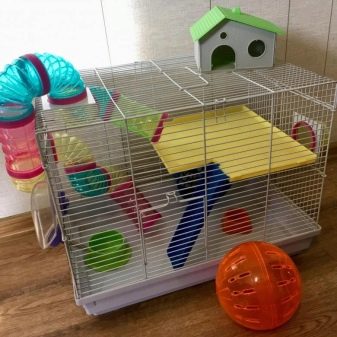

Adults are rather modest in size: the length of the rodent's body is about 7 centimeters with a mass of 50-60 grams.The head of the animal is round, with a pointed muzzle and small ears. The paws are covered with fur, the pupils of Campbell's hamsters can be black or red, which increases their decorative appeal.
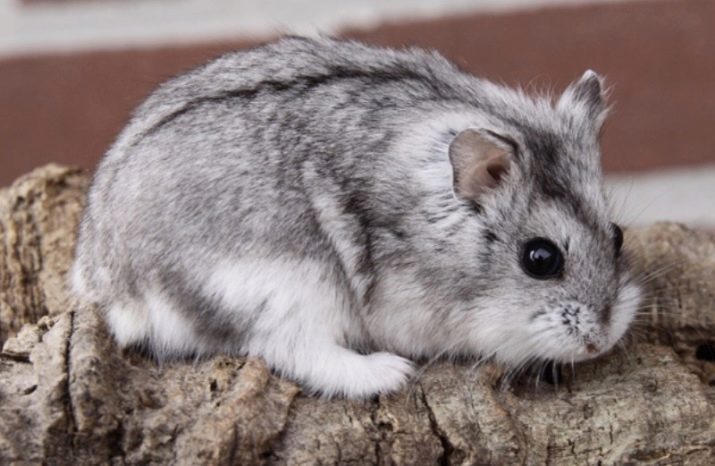
The tail is so small that it is almost invisible under the hair sticking out in different directions. A rodent's coat can have several color options. Today, the following types are most common:
- auti - an animal with a dark stripe along the back, a light belly and a sandy back;
- self - a rodent with a monochromatic coat all over its body, sometimes whitish spots can be found on the animal's belly.
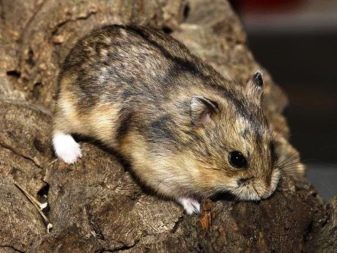
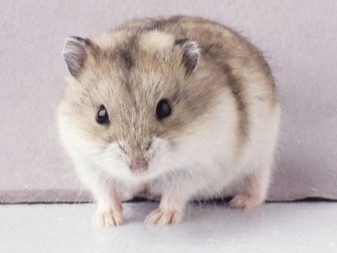
As a result of crosses, hamsters of black, tortoiseshell, silver and even white colors were also bred.
Initially, this hamster was attributed to the Dzungarian subspecies, however, these small rodents are quite easy to distinguish from each other due to their external characteristics.
- First of all, it concerns the color of the eyes. Only Russian dwarf hamsters can have red pupils.
- Campbell's hamster has hair on its limbs.
- Russian dwarf individuals do not change their coat color, focusing on the season.
- Differences also apply to the characteristic stripe on the back. In Camppell rodents, it is thin and does not go over to the muzzle.
- In addition, individuals have different body shapes. So, the Dzungarian hamster, when viewed from above, will have an egg-shaped shape, while a dwarf rodent, rather, will be visually similar to the number eight.

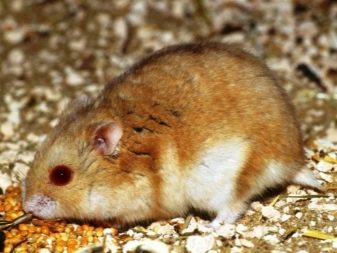
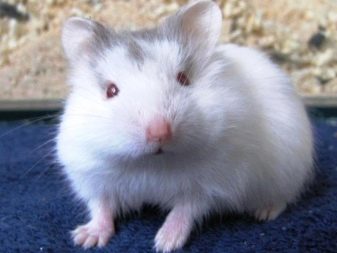

Character and behavior
The nature of small animals deserves special attention, since individuals stand out for their aggressive behavior not only in contact with other hamsters, but can also be hostile towards their owners. This is expressed in bites that can be obtained from a rodent upon contact with it. Therefore, you can often find recommendations regarding refusal to purchase such a pet for small children.

However, these hamsters' reactions are most often caused by a response to external stimuli. Therefore, breeders of dwarf animals highlight a number of situations that should be avoided if Campbell's hamsters live in the house.
- When in contact with one individual or several hamsters, do not make sudden movements. This applies to feeding, playing and other joint activities.
- If there is a desire to take the animal in your arms, then they should not smell of food, otherwise the hamster may mistake the limbs for a potential source of food.
- It will be possible to reduce the aggression of pets by placing a stone in the animal's house, which they will use to grind their teeth.
- Rodents should be properly handled - only from below or from one side. An alternative option would be to place your hand next to the rodent so that it can settle on it on its own.
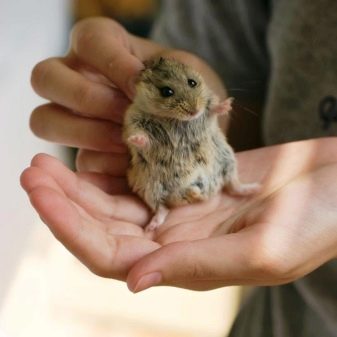
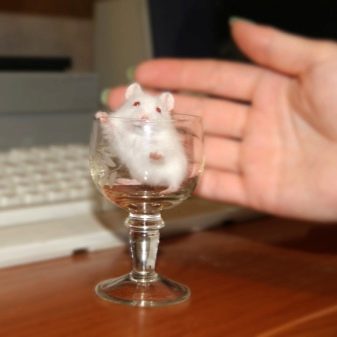
To appease an animal when meeting or contacting you can be a treat, communication in an even voice. If the pet has bitten its owner, then this place should be disinfected with peroxide.
Life span
The life expectancy of the animals will directly depend on the diet. In the wild, their life cycle averages about three to four years. The owner of dwarf hamsters should carefully approach the issue of feeding so that the acquired pet lives in the house as long as possible.
In addition to the main point that determines the life cycle of a rodent, captive animals can face potential hazards in the home. This applies to other pets, such as cats, or the negligence of breeders who can leave the hamster out of the cage unattended.
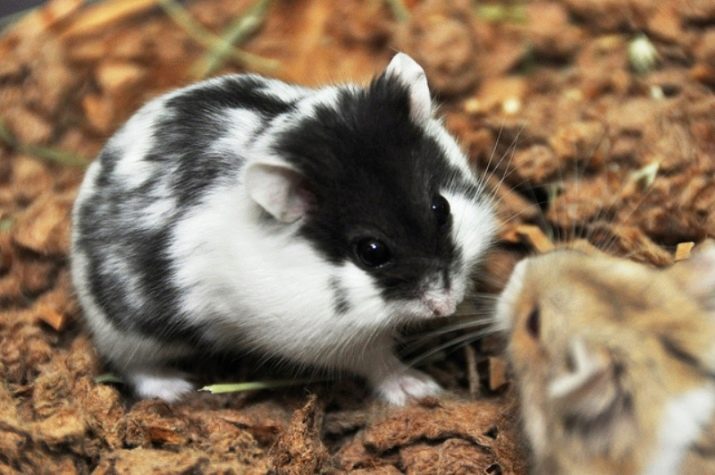
How to determine gender?
Sometimes for breeders, it is fundamentally important to question the sex of the acquired or born individuals. In ordinary hamsters, it will be much easier to determine the sex, as for dwarf breeds, then to establish the sex, you need to be guided by certain external distinctive features.
- The animal must be lifted by the scruff of the belly towards you. This position of the body will force the hamster to move the lower limbs.
- The task of determining sex is reduced to establishing the distance between the genitals and the anus of an individual. Females in this area will in most cases lack fur. As for sexually mature males, their belly in this area will always be moist. This is due to the active work of the glands.
- In females, the distance will be minimal; the gland is practically not visualized. Two rows of nipples will extend from the breast. In males, the gland will be pronounced; its external resemblance to the navel can be noted. In addition, there will be a significant distance between the anus and the genital organ.
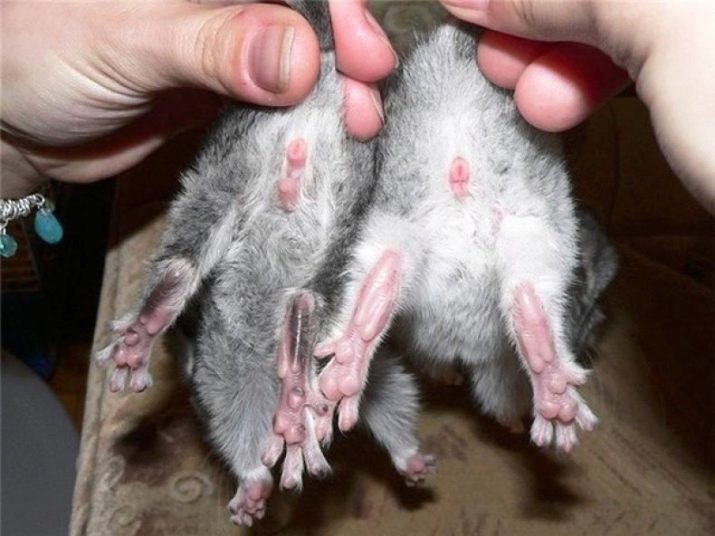
How to choose and arrange a cage?
In the wild, the Russian dwarf hamster lives together with its numerous relatives, but in captivity, it is still advised to keep the rodents separately. This is especially true for adult hamsters that regularly fight for territory.
The hamster will feel great in an aquarium or a cage with very small rods located as close to each other as possible. The optimal size of the house is 40x60 centimeters. In an aquarium or a cage, it is imperative to equip a house for a rodent; in the light of its natural instincts, a hamster needs a place in which he can hide, sleep and store his supplies.
The best material for it will be plastic, since the rodent quickly grinds off the wood with its teeth.
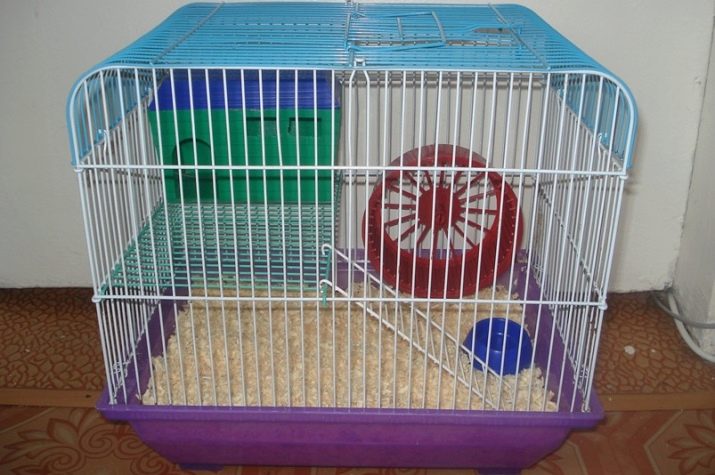
You should also choose the right bedding, it can be wood shavings or sawdust. Specialized pet shops sell formulations that can be used as filler for an animal house. Cotton, yarn and paper should be discarded.
You should select such a litter option that will be convenient for cleaning, you need to put things in order in the house several times a week, otherwise the smell from rodent excrement will quickly fill the entire dwelling, they should be cleaned daily.
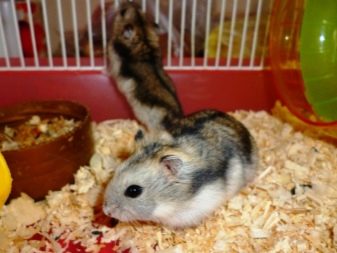
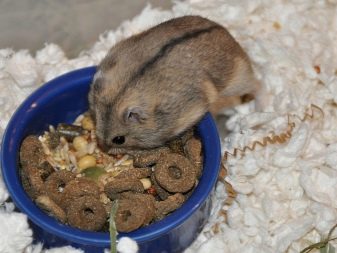
A place for a house with animals should be chosen away from heating appliances, batteries, direct ultraviolet rays and drafts. The rodent's feeder should be heavy so that the animal does not overturn it. This also applies to drinkers, it would be more correct to purchase a product that can be attached to the bars of the house. As additional necessary things for the hamster in the house, you can put a bath for water procedures and even a toilet tray.
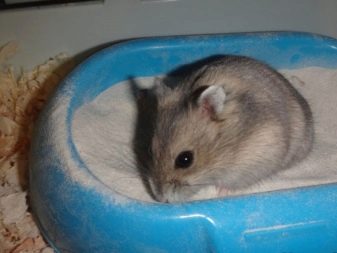

For games, it is not recommended to let the hamster run around the house; for physical activity, a running wheel will be enough for him.
During routine cleaning, you cannot remove all the litter from the cage, since the pet is quite sensitive to a change in environment. All hygiene measures should be carried out without the use of household chemicals; alternatively, the use of baking soda or tooth powder is allowed.
Maintenance and care
In addition to questions regarding the arrangement of the house and its hygiene, for the health of the animal living in the house, it is necessary to take care of its diet and leisure time.
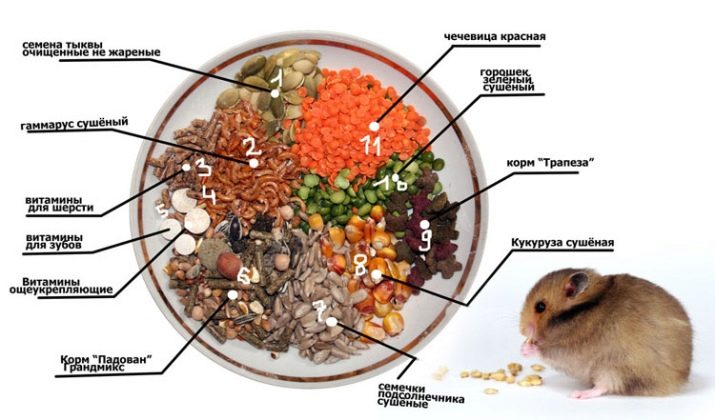
What and how to feed?
The rodent's menu should be balanced and varied; most often, breeders prefer to use specialized store food for feeding dwarf hamsters. However, in addition to the mixture, fresh food should be included in the pet's diet. It can be zucchini, cucumber, corn, carrots. From sweet seasonal berries and fruits, the rodent can be offered bananas, apples, pears, grapes.
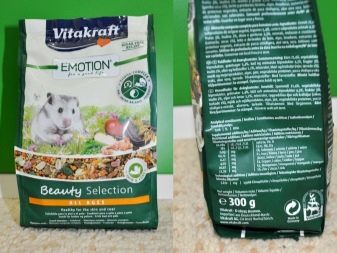

For the health of the body, the hamster will need to regularly replenish its protein supply, therefore, no more than once every seven days, he needs to introduce boiled low-fat fish, cottage cheese into the menu. Rodents eat greens well.
All types of citrus fruits, smoked meats and sausages, sweets, bakery products should be classified as products that are strictly forbidden to give to pets.

In addition to food, the animals will need drinking water, which must always be in their home. Lack of fluid can lead to dehydration of the animal, which is fraught with its death. It is worth adding acetylsalicylic acid to the water; it is recommended to change the liquid every other day. Many breeders recommend giving pets vitamins every six months, which are sold in veterinary pharmacies and stores. To care for its teeth, the animal will need a chalk stone, thanks to which it will be able to grind down its growing teeth.
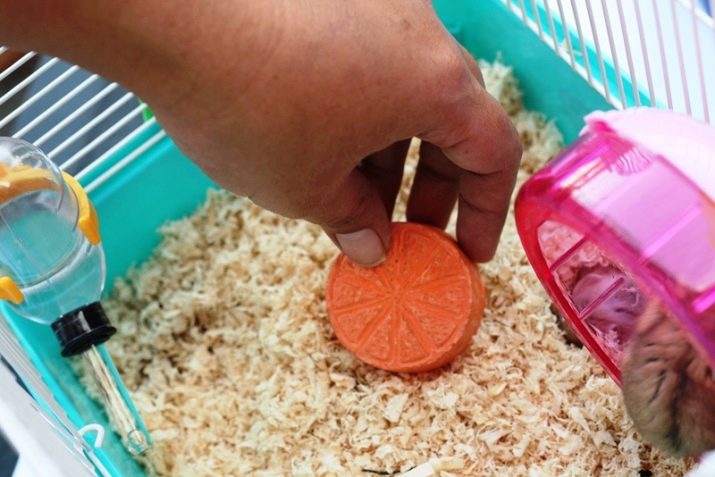
Games and entertainment
Since the animals are distinguished by high activity, it is important for them to organize good leisure time inside the dwelling. As your favorite toys, you should highlight the labyrinth, ball, wheel. The last playable item in a house or aquarium will act as a prevention of pet obesity, which will positively affect its life expectancy.
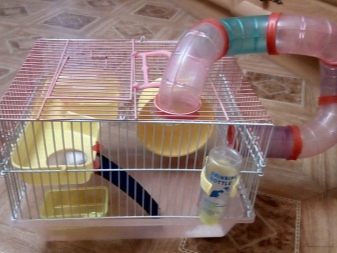
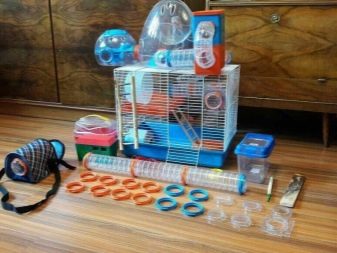
Reproduction
Individuals of dwarf hamsters become sexually mature quite early: as a rule, a female at the age of three months is already capable of reproducing offspring. However, upon reaching one year, it will be more difficult for her to give birth to cubs each time, this is due to the peculiarities of the skeleton. Over time, female bones become too hard.
The breeding process begins in early spring and continues until the arrival of autumn. During this period, a young individual can bear up to four offspring. Campbell hamster breeders do not recommend crossing close relatives with each other, as this is fraught with various gene mutations.
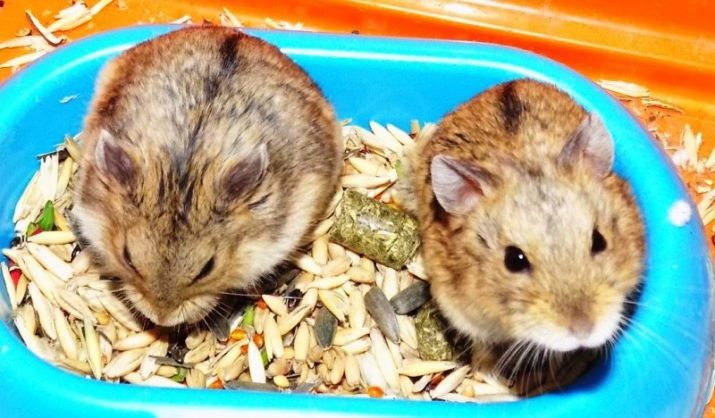
The creation of a pair of hamsters in captivity should be gradual as individuals are distinguished by an aggressive disposition. First, future parents are placed in one cage, but with a special partition, which will exclude fights between the animals. After they get used to each other, you can move on to closer contact. When mating occurs, the male should be separated from the female again. The pregnant female must be provided with materials for building the nest.
For the offspring, the breeder is advised to buy a more spacious house.
Pregnancy lasts only three weeks, at which time the rodent needs to introduce as much food containing protein into the diet as possible, and also regularly give the female dill and parsley. Cubs of hamsters are born without hair, they have not yet developed the organs of hearing and vision, and a person cannot touch them, since a female, in the presence of alien odors, can eat her offspring. Therefore, at first, a person should not contact new pets.
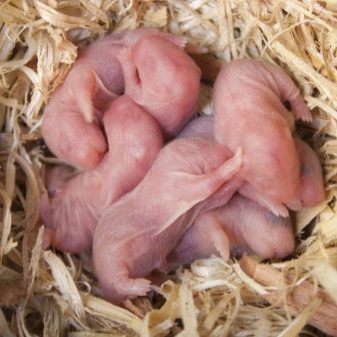

For how Campbell's hamster looks like, see the next video.








